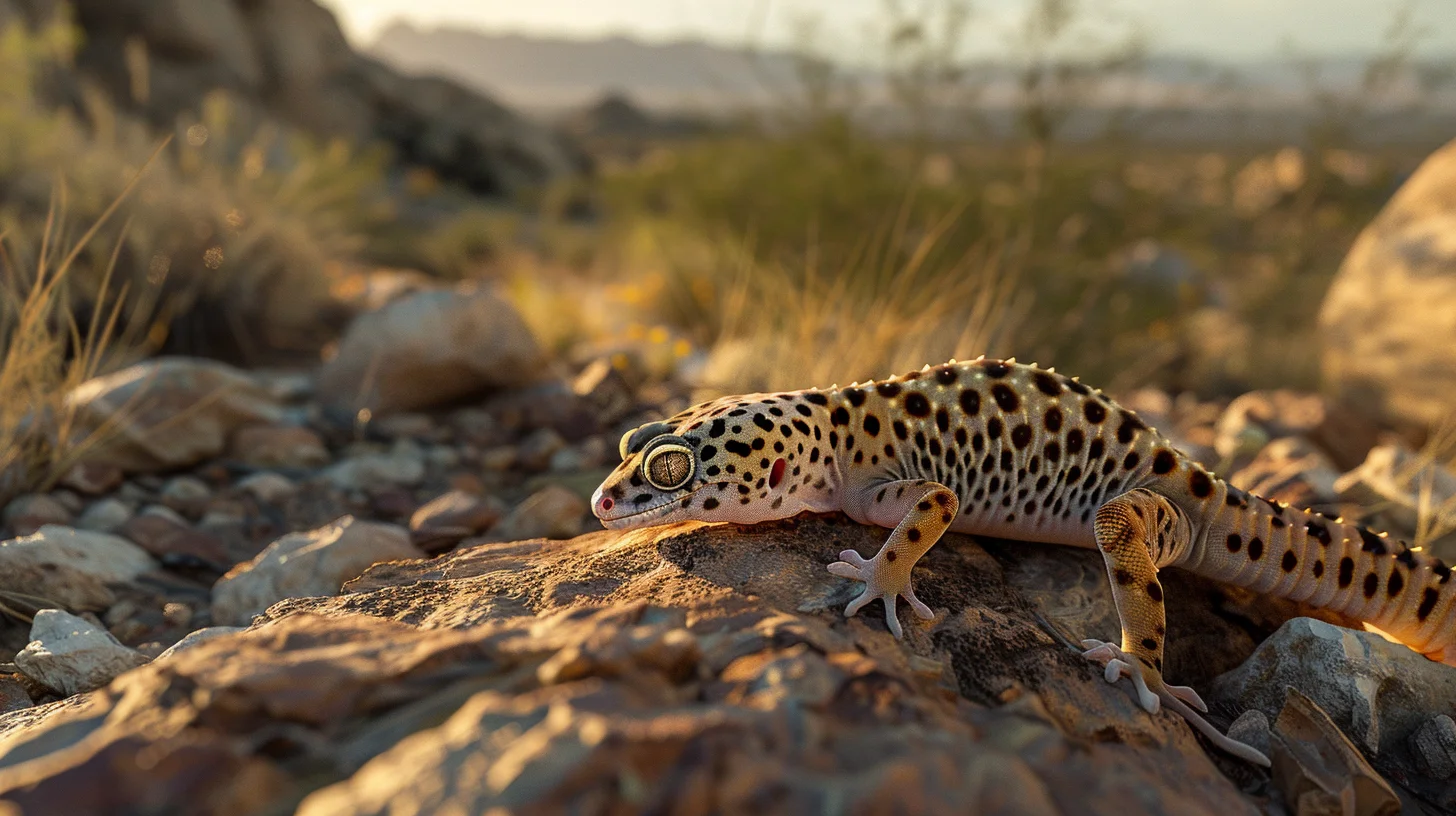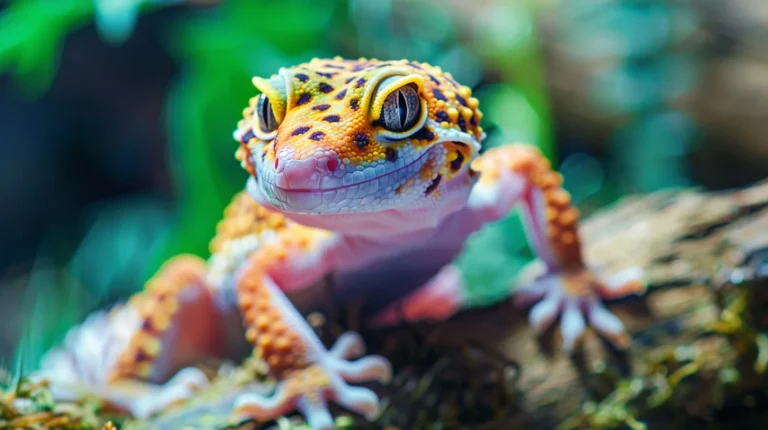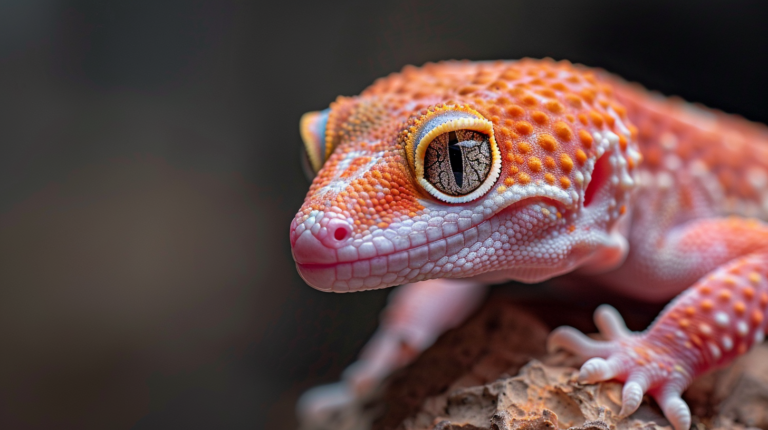Discover 4 shocking facts about wild leopard geckos that will amaze you. Learn about their natural habitat, survival skills, and fascinating behaviors in the wild.
Table of Contents
The wild leopard gecko represents one of nature’s most remarkable adaptations to harsh desert environments. While millions of people worldwide keep leopard geckos as beloved pets, few truly understand the incredible survival strategies and fascinating behaviors these creatures exhibit in their natural habitat. From the arid landscapes of Afghanistan to the rocky terrains of Pakistan, wild leopard geckos have mastered the art of desert survival in ways that continue to astound researchers and wildlife enthusiasts alike.
These small but mighty reptiles have evolved over millions of years to become perfectly suited to some of the world’s most challenging environments. Their ability to thrive in extreme temperatures, navigate complete darkness, and survive extended periods without food or water showcases nature’s incredible ingenuity. Understanding the wild leopard gecko’s natural behaviors not only deepens our appreciation for these remarkable creatures but also provides invaluable insights for pet owners seeking to create optimal care environments for their captive companions.
In this comprehensive guide, we’ll explore four shocking facts about wild leopard geckos that reveal the extraordinary nature of these desert dwellers, examine their natural habitat and survival strategies, and uncover the remarkable adaptations that make them true masters of their environment.
The Natural Habitat of Wild Leopard Geckos

Geographic Distribution and Climate Conditions
Wild leopard geckos (Eublepharis macularius) inhabit a vast region spanning across Afghanistan, Pakistan, northwest India, and parts of Iran. This extensive range encompasses some of the world’s most extreme desert and semi-arid environments, where temperatures can fluctuate dramatically between scorching days and frigid nights.
The natural habitat of these remarkable reptiles consists primarily of:
- Rocky outcrops and crevices that provide essential shelter and temperature regulation
- Sparse grasslands with minimal vegetation and exposed soil
- Semi-arid scrublands featuring scattered shrubs and drought-resistant plants
- Clay and sandy substrates that allow for efficient burrowing and den construction
- Elevation ranges from sea level to approximately 2,000 meters above sea level
Seasonal Adaptations and Microhabitat Selection
Wild leopard geckos demonstrate remarkable selectivity when choosing their microhabitats. During the active season (spring through early fall), they prefer areas with:
- Abundant rock crevices for daytime hiding
- Proximity to insect populations near vegetation
- Access to temporary water sources following rare rainfall
- Suitable substrate for creating winter hibernation burrows
The seasonal climate variations in their native range are extreme, with summer temperatures often exceeding 40°C (104°F) during the day and winter temperatures dropping below freezing. This dramatic temperature range has shaped every aspect of their physiology and behavior.
Shocking Fact #1: Wild Leopard Geckos Are Master Hibernators

The Science of Brumation in Wild Populations
Perhaps the most surprising aspect of wild leopard gecko behavior is their remarkable ability to enter extended periods of dormancy called brumation. Unlike the relatively mild seasonal changes experienced by captive geckos, wild populations must survive harsh winters where temperatures can remain below freezing for months at a time.
During brumation, wild leopard geckos undergo dramatic physiological changes:
Metabolic Slowdown:
- Heart rate decreases by up to 80%
- Breathing rate reduces to barely detectable levels
- Digestive processes virtually cease
- Body temperature drops to match environmental conditions
Behavioral Adaptations:
- Construction of elaborate underground burrow systems
- Clustering behavior with multiple individuals sharing hibernation sites
- Strategic positioning to maximize thermal protection
- Complete cessation of surface activity for 4-6 months
Underground Architecture and Survival Strategies
Recent field studies have revealed that wild leopard geckos create sophisticated underground burrow networks that can extend up to 1.5 meters deep. These burrows feature multiple chambers, including:
- Primary hibernation chamber located at the deepest point for maximum thermal stability
- Secondary escape routes providing emergency exits if disturbed
- Food storage areas where geckos may cache insects before brumation
- Ventilation shafts ensuring adequate air circulation during dormancy
Research conducted by herpetologists in Afghanistan documented wild leopard geckos surviving burial under snow for over four months, emerging in perfect health when spring temperatures returned. This incredible survival ability far exceeds what most pet owners realize their captive geckos are capable of enduring.
Shocking Fact #2: They Can Survive Extreme Dehydration
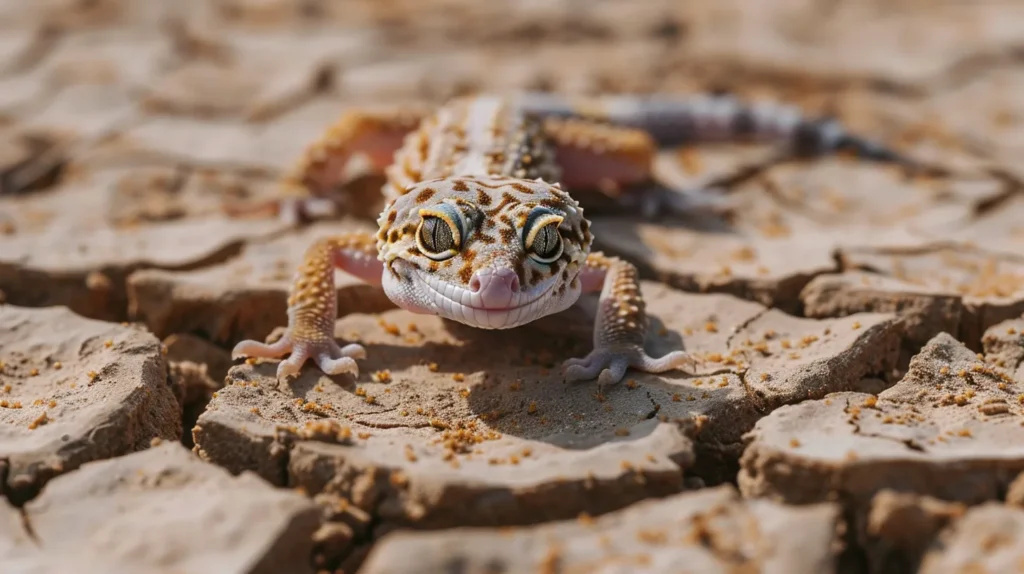
Water Conservation Mechanisms
Wild leopard geckos possess extraordinary physiological adaptations that allow them to survive in environments where water sources may be unavailable for months at a time. Their water conservation abilities surpass those of many other desert-dwelling reptiles.
Advanced Kidney Function:
- Highly concentrated urine production to minimize water loss
- Specialized salt glands that process excess minerals without requiring additional water
- Ability to extract maximum moisture from food sources
- Efficient reabsorption of water from metabolic waste
Behavioral Water Conservation:
- Strategic positioning to collect dew and rare precipitation
- Moisture absorption through specialized skin cells
- Selective feeding on high-moisture prey items
- Timing of activity to coincide with periods of higher humidity
Remarkable Dehydration Tolerance
Laboratory studies have demonstrated that wild-caught leopard geckos can survive losing up to 40% of their body weight through dehydration—a level that would be fatal to most mammals. This incredible tolerance is achieved through:
- Cellular adaptations that maintain function despite significant water loss
- Protein modifications that remain stable under extreme dehydration
- Membrane adjustments that prevent cellular collapse
- Metabolic flexibility allowing energy production without normal hydration levels
Field observations have documented wild leopard geckos surviving entire dry seasons lasting 8-10 months with minimal access to free water sources. Their ability to obtain sufficient moisture from their prey and environmental sources alone represents one of nature’s most impressive water conservation systems.
Shocking Fact #3: Wild Leopard Geckos Are Surprisingly Social
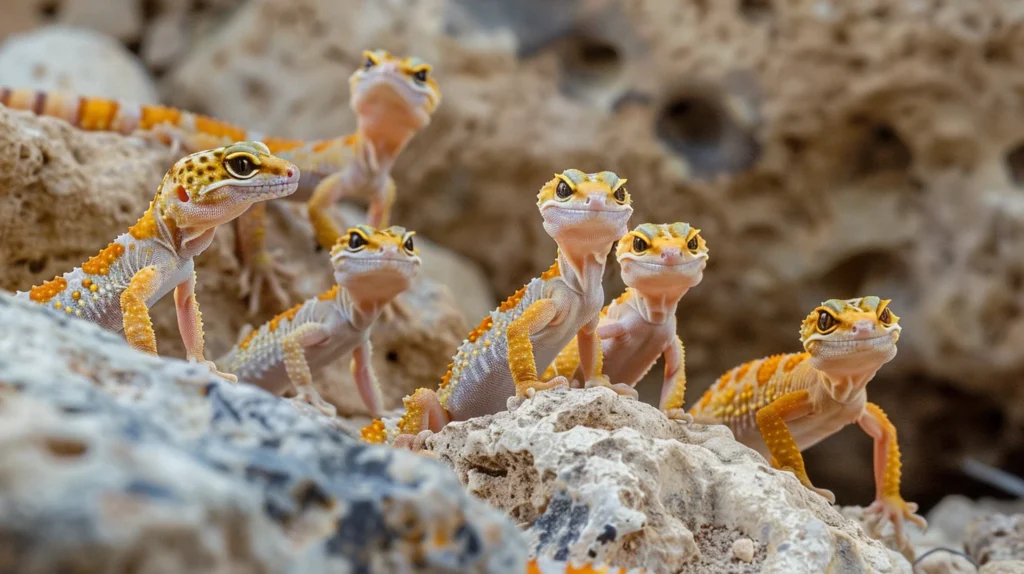
Complex Social Structures in Natural Populations
Contrary to the common belief that leopard geckos are strictly solitary creatures, extensive field research has revealed that wild populations exhibit surprisingly complex social behaviors and community structures. These social interactions play crucial roles in survival, reproduction, and resource management.
Communal Denning Behavior:
- Groups of 15-30 individuals sharing hibernation sites
- Cooperative thermoregulation through clustering
- Shared vigilance against predators during vulnerable periods
- Coordinated emergence timing in spring
Communication Systems:
- Sophisticated scent marking using femoral pores
- Territorial boundary establishment through chemical signals
- Mating readiness indicators through pheromone release
- Distress calls that alert nearby individuals to danger
Social Hierarchy and Resource Sharing
Wild leopard gecko communities establish clear social hierarchies that determine access to prime territories, food sources, and mating opportunities. These hierarchies are maintained through:
Non-Aggressive Dominance Displays:
- Tail positioning and movement patterns
- Body posturing and size display
- Scent gland marking intensity
- Strategic positioning during group activities
Cooperative Behaviors:
- Shared hunting territories with minimal conflict
- Collective predator detection and warning systems
- Group thermoregulation during extreme weather
- Coordinated dispersal of juveniles to prevent overcrowding
Research teams studying wild populations in Pakistan documented remarkable instances of adult geckos guiding juveniles to suitable shelter sites and even sharing food resources during particularly harsh environmental conditions.
Shocking Fact #4: They’re Incredibly Efficient Predators
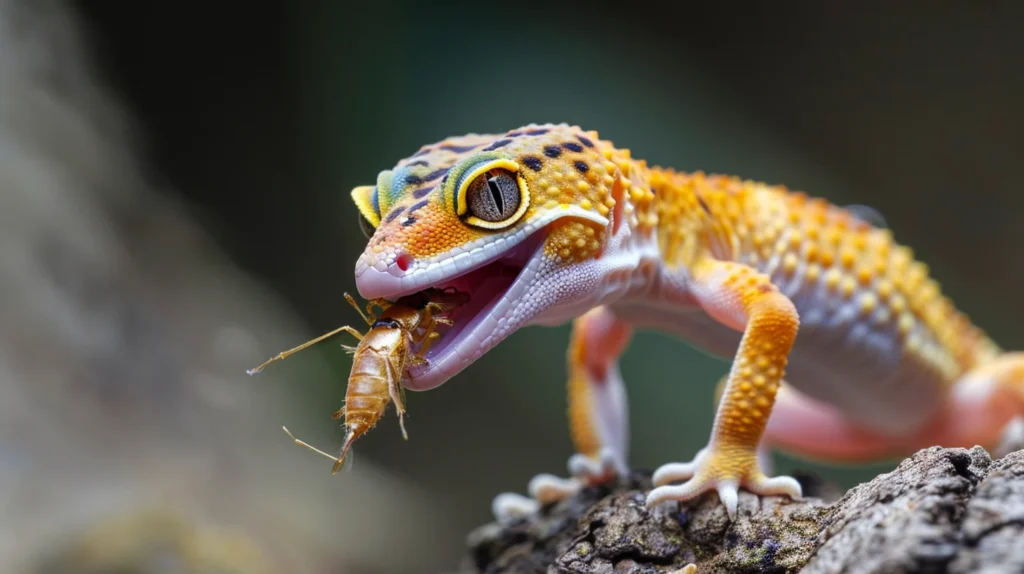
Advanced Hunting Techniques and Prey Specialization
Wild leopard geckos demonstrate hunting prowess that far exceeds the feeding behaviors typically observed in captive environments. Their natural predatory instincts have been honed through millions of years of evolution to maximize hunting success in resource-scarce environments.
Specialized Hunting Strategies:
- Ambush predation utilizing perfect camouflage and patience
- Active pursuit of fast-moving prey across varied terrain
- Opportunistic scavenging of weakened or deceased insects
- Seasonal prey switching based on availability and nutritional needs
Sensory Adaptations for Hunting:
- Enhanced night vision capable of detecting movement in near-total darkness
- Vibration detection through specialized sensory cells in feet and jaw
- Chemical tracking using tongue-flicking and vomeronasal organ analysis
- Heat detection for locating warm-blooded prey items
Prey Diversity and Nutritional Intelligence
Analysis of wild leopard gecko stomach contents has revealed an incredibly diverse diet that includes over 50 different insect species, arachnids, and even small vertebrates. This dietary flexibility demonstrates remarkable nutritional intelligence:
Primary Prey Categories:
- Nocturnal beetles comprising 35-40% of diet volume
- Cricket and grasshopper species providing essential protein
- Moths and other flying insects captured during seasonal emergences
- Spiders and scorpions offering high-fat content for energy storage
- Ant species consumed in large quantities during swarming events
Nutritional Optimization:
- Selective feeding based on seasonal nutritional requirements
- Increased fat consumption before brumation periods
- Protein-rich prey selection during reproductive seasons
- Mineral supplementation through consumption of specific beetle species
Field studies have documented individual wild leopard geckos consuming up to 15 different prey species in a single night, demonstrating their ability to capitalize on brief periods of insect abundance.
Understanding Wild Behavior for Better Pet Care
Applying Natural Insights to Captive Environments
The remarkable adaptations and behaviors of wild leopard geckos provide invaluable guidance for creating optimal care conditions for pet geckos. Understanding their natural history allows us to replicate essential environmental elements that promote physical and psychological well-being.
Environmental Enrichment Based on Natural Behaviors:
- Multiple hiding spots mimicking natural rock crevices and burrow systems
- Temperature gradients reflecting the thermal diversity of their native habitat
- Substrate choices allowing for natural digging and burrowing behaviors
- Lighting cycles that match seasonal variations in their geographic range
Feeding Strategies Inspired by Wild Behavior:
- Varied prey items reflecting natural dietary diversity
- Hunting opportunities through live feeding when appropriate
- Seasonal feeding adjustments to mimic natural availability patterns
- Supplementation programs based on wild nutritional analysis
Recognizing Natural Behaviors in Captivity
Pet owners who understand wild leopard gecko behaviors are better equipped to recognize and interpret their gecko’s natural instincts:
Brumation Preparation:
- Decreased appetite during cooler months
- Increased burrowing and hiding behavior
- Reduced activity levels and extended sleeping periods
- Natural weight fluctuations reflecting seasonal cycles
Social Indicators:
- Scent marking behaviors around territory boundaries
- Response to other geckos in multi-animal households
- Communication attempts through positioning and movement
- Stress indicators when social needs aren’t met
Conservation Status and Wild Population Challenges
Current Threats to Wild Populations
While leopard geckos are not currently classified as endangered, wild populations face increasing pressures from human activities and environmental changes. Understanding these challenges helps us appreciate the importance of conservation efforts and responsible pet ownership.
Primary Threats Include:
- Habitat destruction due to agricultural expansion and urban development
- Climate change impacts altering traditional precipitation and temperature patterns
- Collection for the pet trade removing breeding adults from wild populations
- Invasive species competing for resources and prey items
- Pollution effects from agricultural chemicals and industrial activities
Population Monitoring Efforts:
- Field research programs tracking population density and health
- Genetic studies assessing population diversity and connectivity
- Climate impact assessments predicting future habitat suitability
- Conservation breeding programs maintaining genetic diversity
Supporting Conservation Through Responsible Pet Ownership
Pet owners can contribute to wild leopard gecko conservation through several important practices:
Ethical Sourcing:
- Choose captive-bred animals from reputable breeders
- Avoid purchasing wild-caught specimens
- Support breeding programs that maintain genetic diversity
- Research breeder practices and animal welfare standards
Education and Awareness:
- Share knowledge about wild leopard gecko ecology and conservation
- Participate in citizen science projects when possible
- Support organizations conducting field research and habitat protection
- Advocate for responsible pet trade regulations
Visual Guide: Wild vs. Captive Leopard Gecko Behaviors
Behavioral Comparison Chart
| Behavior Category | Wild Leopard Geckos | Captive Leopard Geckos |
| Activity Pattern | Highly seasonal with 4-6 month dormancy | Year-round activity with occasional rest periods |
| Social Interaction | Complex community structures and hierarchies | Limited social interaction, often solitary |
| Hunting Behavior | Active predation of 50+ prey species | Feeding on provided prey items |
| Shelter Construction | Elaborate burrow systems up to 1.5m deep | Use of provided hides and substrate |
| Territorial Behavior | Extensive scent marking and territory defense | Limited territorial displays |
| Seasonal Responses | Dramatic physiological and behavioral changes | Mild seasonal variations |
Environmental Requirements Comparison
Wild Habitat Conditions:
- Temperature range: -5°C to 45°C (23°F to 113°F)
- Humidity: 10-30% most of year, up to 60% during monsoons
- Substrate: Clay, sand, and rock with extensive underground access
- Shelter: Natural rock crevices and self-constructed burrows
- Food availability: Highly seasonal and unpredictable
Optimal Captive Conditions:
- Temperature range: 20°C to 35°C (68°F to 95°F)
- Humidity: 30-40% with occasional increases to 50%
- Substrate: Sand, tile, or paper towels with hide boxes
- Shelter: Artificial caves and hiding spots
- Food availability: Regular, predictable feeding schedule
Advanced Care Considerations for Wild-Type Behaviors
Encouraging Natural Behaviors in Captivity
Pet owners who want to provide the most naturalistic environment for their leopard geckos can incorporate several elements that reflect wild behaviors and needs:
Environmental Complexity:
- Multi-level terrarium design with varied elevation and hiding spots
- Substrate depth allowing for digging and burrow construction
- Temperature microhabitats providing choice in thermal environments
- Seasonal lighting changes reflecting natural photoperiod variations
- Humidity variation mimicking seasonal moisture patterns
Behavioral Enrichment:
- Foraging opportunities through varied food placement and timing
- Exploration encouragement with rearranged habitat elements
- Natural hunting behaviors through appropriate live feeding
- Social considerations for housing multiple compatible individuals
- Seasonal care adjustments reflecting natural activity cycles
Recognizing and Supporting Brumation
Understanding the natural brumation process helps pet owners recognize when their gecko may be experiencing this instinctive behavior:
Pre-Brumation Indicators:
- Gradual decrease in appetite over several weeks
- Increased time spent in hiding spots
- Preference for cooler areas of the habitat
- Reduced response to handling and stimulation
- Natural weight loss as metabolism slows
Supporting Safe Brumation:
- Maintain access to water throughout the dormancy period
- Reduce feeding frequency but continue offering food periodically
- Monitor weight loss to ensure it remains within healthy parameters
- Provide undisturbed, secure hiding areas
- Maintain appropriate temperature ranges for the dormancy period
For more expert pet care tips and product recommendations, visit BlithePet.com — your trusted source for pet wellness.
Frequently Asked Questions
How long do wild leopard geckos live compared to captive ones?
Wild leopard geckos typically live 8-12 years in their natural habitat, facing numerous survival challenges including predation, extreme weather, and food scarcity. In contrast, captive leopard geckos often live 15-20 years or more with proper care, protected from natural dangers and provided consistent nutrition and healthcare. The controlled environment of captivity significantly extends their lifespan while wild populations face the constant pressures of survival in harsh desert conditions.
Do wild leopard geckos really change colors for camouflage?
Yes, wild leopard geckos possess remarkable color-changing abilities that far exceed what’s typically observed in captive animals. They can adjust their coloration and pattern intensity based on temperature, substrate, lighting conditions, and stress levels. This adaptive camouflage helps them blend seamlessly with rocky outcrops, sandy soil, and vegetation in their natural habitat. The color changes occur through specialized cells called chromatophores and can happen within minutes of environmental changes.
What’s the biggest difference between wild and pet leopard gecko behavior?
The most significant difference is the complex social structure and seasonal behavior patterns of wild populations compared to the relatively simplified behaviors of captive geckos. Wild leopard geckos live in communities with established hierarchies, engage in sophisticated communication, and undergo dramatic seasonal changes including extended brumation periods. Pet geckos retain these instincts but express them in modified ways due to the controlled environment and consistent care they receive.
Can pet leopard geckos survive if released into the wild?
No, captive-bred leopard geckos should never be released into the wild and would likely not survive if abandoned. They lack the survival skills, predator avoidance behaviors, and environmental adaptations necessary for wild survival. Additionally, releasing non-native animals is illegal in most areas and can harm local ecosystems. Pet geckos depend on human care for their survival and wellbeing throughout their lives.
How do wild leopard geckos find mates in such harsh environments?
Wild leopard geckos use sophisticated chemical communication systems to locate potential mates across vast desert territories. Males establish territories and mark boundaries with pheromones from specialized femoral pores, while females can detect these chemical signals from considerable distances. During breeding season, they also use specific vocalizations and visual displays to communicate reproductive readiness. Their excellent night vision and sensory abilities help them navigate and locate mates even in complete darkness.
What can pet owners learn from wild leopard gecko research?
Research on wild populations provides invaluable insights for improving captive care, including understanding natural dietary diversity, seasonal behavior patterns, social needs, and environmental preferences. This knowledge helps pet owners create more naturalistic habitats, recognize normal behaviors like brumation tendencies, provide appropriate environmental enrichment, and better understand their gecko’s instinctive needs for optimal health and wellbeing.
Conclusion
The wild leopard gecko represents one of nature’s most remarkable success stories in desert adaptation and survival. These four shocking facts—their master hibernation abilities, extraordinary dehydration tolerance, surprising social complexity, and incredible predatory efficiency—reveal just how amazing these creatures truly are in their natural environment.
Understanding the natural history and wild behaviors of leopard geckos not only deepens our appreciation for these remarkable animals but also provides essential insights for providing optimal care to our captive companions. From their sophisticated underground burrow systems to their complex social hierarchies, wild leopard geckos demonstrate adaptations that continue to amaze researchers and wildlife enthusiasts worldwide.
The extreme survival abilities of wild populations—surviving months of freezing temperatures, tolerating severe dehydration, maintaining complex social relationships, and efficiently hunting diverse prey—showcase the incredible resilience and adaptability that make leopard geckos such fascinating subjects of study and beloved companions.
As we continue to learn more about wild leopard gecko ecology and behavior through ongoing research, we gain valuable knowledge that helps us better understand and care for these amazing animals, whether in captivity or in their natural desert homes.
Have a similar experience with your pet leopard gecko showing wild-type behaviors? Share it in the comments below!

